Decorating
Renovating
How to Choose the Perfect Curtains
This buyer’s guide will take you through the many curtain options and help you decide which will work wonders in your space
Curtains are much more than just a window dressing: they can form the basis of a room’s whole look and atmosphere. They’re practical, too, offering privacy, warmth and energy-saving benefits. However, with so many fabrics, patterns and styles to choose from, it can be difficult to find the right curtains for your space.
Start by looking at how these fabulous homes have embraced curtains and follow the buying advice of these experts.
Professional advice from:
Amanda Duffield of Unidrape Blinds & Interiors; Mary Gannon of Mary Gannon Design; Sarah Quilliam of Hillarys
Find a curtain, blind or shutter supplier or maker local to you and browse user reviews
Start by looking at how these fabulous homes have embraced curtains and follow the buying advice of these experts.
Professional advice from:
Amanda Duffield of Unidrape Blinds & Interiors; Mary Gannon of Mary Gannon Design; Sarah Quilliam of Hillarys
Find a curtain, blind or shutter supplier or maker local to you and browse user reviews
Made-to-measure curtains
Opting for bespoke curtains lets you tailor the material, pattern, colour and style to your own requirements. ‘Ready-made curtains come in standard sizes, while windows don’t – especially in period or traditional homes, where they can be a variety of shapes and sizes,’ says Sarah Quilliam of Hillarys. ‘With a made-to-measure service, you can be confident your curtains will be the best fit for your window.’
In addition, having a wider choice of fabrics means you’ll have greater scope for putting your own stamp on the design. ‘You can add in extra features, too, such as additional lining, tie-backs and headings for a bespoke look that meets your needs,’ adds Quilliam.
A potential disadvantage to made-to-measure curtains is that you can expect lead times of between two and three weeks, depending on the availability of the fabric. Also, as Amanda Duffield points out, ‘Although, in the long term, made-to-measure curtains offer value for money, they’re a more considerable initial outlay than ready-made ones.’ So look for designs that won’t date and that you won’t tire of to justify the higher cost.
Opting for bespoke curtains lets you tailor the material, pattern, colour and style to your own requirements. ‘Ready-made curtains come in standard sizes, while windows don’t – especially in period or traditional homes, where they can be a variety of shapes and sizes,’ says Sarah Quilliam of Hillarys. ‘With a made-to-measure service, you can be confident your curtains will be the best fit for your window.’
In addition, having a wider choice of fabrics means you’ll have greater scope for putting your own stamp on the design. ‘You can add in extra features, too, such as additional lining, tie-backs and headings for a bespoke look that meets your needs,’ adds Quilliam.
A potential disadvantage to made-to-measure curtains is that you can expect lead times of between two and three weeks, depending on the availability of the fabric. Also, as Amanda Duffield points out, ‘Although, in the long term, made-to-measure curtains offer value for money, they’re a more considerable initial outlay than ready-made ones.’ So look for designs that won’t date and that you won’t tire of to justify the higher cost.
The importance of a recommended maker
Never skimp on the making part of your made-to-measure curtains. If cost is a factor, choose a less expensive fabric and, regardless of your budget, look for quality in the service you get from your maker.
‘Always use a recommended curtain-making service, which will send a trained staff member to your home to measure up and give advice on the best style to suit your windows,’ advises Mary Gannon of Mary Gannon Design.
Browse more ways to work dark green into your home
Never skimp on the making part of your made-to-measure curtains. If cost is a factor, choose a less expensive fabric and, regardless of your budget, look for quality in the service you get from your maker.
‘Always use a recommended curtain-making service, which will send a trained staff member to your home to measure up and give advice on the best style to suit your windows,’ advises Mary Gannon of Mary Gannon Design.
Browse more ways to work dark green into your home
Popular curtain headings
A curtain’s heading is the way in which it’s attached to the pole or track, and it can have a big impact on the look of your curtains.
Eyelets
These work an unfussy, contemporary aesthetic, with regular, even pleats. The curtain will need little space either side of the window to stack back.
A curtain’s heading is the way in which it’s attached to the pole or track, and it can have a big impact on the look of your curtains.
Eyelets
These work an unfussy, contemporary aesthetic, with regular, even pleats. The curtain will need little space either side of the window to stack back.
French or pinch pleats
These headings are made by joining three pleats together at the top of the curtains. They are pricier than other options, because they’re more labour-intensive to make, but Quilliam argues they’re worth the extra spend.
‘Pinch pleats give a more tailored finish, with the curtain falling into elegant folds that can easily be dressed for a slightly more formal look, ideal for living rooms,’ she says.
These headings are made by joining three pleats together at the top of the curtains. They are pricier than other options, because they’re more labour-intensive to make, but Quilliam argues they’re worth the extra spend.
‘Pinch pleats give a more tailored finish, with the curtain falling into elegant folds that can easily be dressed for a slightly more formal look, ideal for living rooms,’ she says.
Pencil pleats
These are narrow, single pleats formed in neat folds. ‘Pencil pleats are less structured than pinch pleats and have an attractive, uniform gathered edge that works particularly well in more casual situations, such as a home office or bedroom,’ explains Quilliam.
See how to future-proof your child’s bedroom
These are narrow, single pleats formed in neat folds. ‘Pencil pleats are less structured than pinch pleats and have an attractive, uniform gathered edge that works particularly well in more casual situations, such as a home office or bedroom,’ explains Quilliam.
See how to future-proof your child’s bedroom
Blackout lining
Your curtains will not be complete without the right linings for your lifestyle. Blackout linings, for example, will block much of the light that would otherwise creep through closed curtains. ‘For shift workers, parents with babies and cinema rooms, blackout is an essential element,’ says Gannon. ‘They also provide insulation, thus energy-saving benefits, as well as reducing noise from outside.’
Blackout curtains are a useful feature in other areas of the home, too; for example, in living areas, they can prevent glare on your TV or computer screen. ‘For total darkness, you could team blackout curtains and blinds together at one window,’ suggests Quilliam.
Your curtains will not be complete without the right linings for your lifestyle. Blackout linings, for example, will block much of the light that would otherwise creep through closed curtains. ‘For shift workers, parents with babies and cinema rooms, blackout is an essential element,’ says Gannon. ‘They also provide insulation, thus energy-saving benefits, as well as reducing noise from outside.’
Blackout curtains are a useful feature in other areas of the home, too; for example, in living areas, they can prevent glare on your TV or computer screen. ‘For total darkness, you could team blackout curtains and blinds together at one window,’ suggests Quilliam.
Thermal lining
A lot of heat can be lost through windows and, with utility bills continuing to rise, thermal curtains will help you make savings. ‘According to a recent survey by Kingfisher, Europeans are more concerned about energy prices than their mortgages or rent payments,’ says Quilliam. ‘Fully lined curtains can help to prevent heat from escaping through windows but, for added cosiness, consider a thermal lining.’
A lot of heat can be lost through windows and, with utility bills continuing to rise, thermal curtains will help you make savings. ‘According to a recent survey by Kingfisher, Europeans are more concerned about energy prices than their mortgages or rent payments,’ says Quilliam. ‘Fully lined curtains can help to prevent heat from escaping through windows but, for added cosiness, consider a thermal lining.’
Voiles
Voiles, also known as sheers, will soften the overall appearance of a window, maximise natural light during the daytime and still offer privacy. They’re not lined, so they don’t take up much room when pulled back from the window, which also makes them ideal where space is at a premium.
Available in a range of fabrics, including cotton, silk and synthetic materials, sheers can be more cost-effective than traditional curtains. ‘Lots are available in wider widths, cutting down on the amount of making-up time needed,’ explains Gannon.
Voiles have health benefits, too. ‘They’re good for people who suffer from hay fever, as they can help to stop pollen entering a room,’ Gannon says. ‘With the exception of silk, they can be cleaned more regularly than standard curtains, which is a benefit to asthma and allergy sufferers.’
Voiles, also known as sheers, will soften the overall appearance of a window, maximise natural light during the daytime and still offer privacy. They’re not lined, so they don’t take up much room when pulled back from the window, which also makes them ideal where space is at a premium.
Available in a range of fabrics, including cotton, silk and synthetic materials, sheers can be more cost-effective than traditional curtains. ‘Lots are available in wider widths, cutting down on the amount of making-up time needed,’ explains Gannon.
Voiles have health benefits, too. ‘They’re good for people who suffer from hay fever, as they can help to stop pollen entering a room,’ Gannon says. ‘With the exception of silk, they can be cleaned more regularly than standard curtains, which is a benefit to asthma and allergy sufferers.’
Layered curtains
Combining different layers of window coverings allows you to control light, add extra privacy and cut your energy bills.
‘We often get asked if curtains and blinds work together,’ says Quilliam. ‘For the most part, the answer is “yes”. When paired, the two can provide a perfect balance of function and style. The blind generally does the job of light control and privacy and the curtains add softness and a greater design element.
‘Although rollers, Venetians or Romans are most commonly layered with curtains, we are starting to see a rise in people opting for a curtains/shutters combo,’ adds Quilliam. ‘The curtains are a way to soften the look of shutters and bring warmth and cosiness to a room.’
Combining different layers of window coverings allows you to control light, add extra privacy and cut your energy bills.
‘We often get asked if curtains and blinds work together,’ says Quilliam. ‘For the most part, the answer is “yes”. When paired, the two can provide a perfect balance of function and style. The blind generally does the job of light control and privacy and the curtains add softness and a greater design element.
‘Although rollers, Venetians or Romans are most commonly layered with curtains, we are starting to see a rise in people opting for a curtains/shutters combo,’ adds Quilliam. ‘The curtains are a way to soften the look of shutters and bring warmth and cosiness to a room.’
How to get the layered look
Sarah Quilliams’s top tips for layering are:
Sarah Quilliams’s top tips for layering are:
- Choose complementary shades for a coordinated impression, or different prints for a more eclectic feel.
- Teaming curtains with blinds can create the illusion of a bigger window or make your ceiling appear higher. Just fit your blind a few centimetres above the window, with the curtain pole at the same height but extended up to 60cm out at each side.
- Rollers or Romans are a stylish way to dress a bay. Go for a bold pattern on the blinds and plain curtains in a toning hue at either side, or vice versa, for a decorative focal point.
Pointers about pattern
The pattern you choose can make a room seem larger or smaller than it actually is. ‘It’s important to keep the background colours the same when you’re using coordinating patterns, and make sure you don’t overwhelm the room with a riot of different designs,’ says Quilliam.
‘When dressing large windows, the scale of pattern is critical. Too large a print can overpower, while too small looks fussy and will blend into the background.’
The pattern you choose can make a room seem larger or smaller than it actually is. ‘It’s important to keep the background colours the same when you’re using coordinating patterns, and make sure you don’t overwhelm the room with a riot of different designs,’ says Quilliam.
‘When dressing large windows, the scale of pattern is critical. Too large a print can overpower, while too small looks fussy and will blend into the background.’
Cleaning your curtains
Most curtains can be dry-cleaned, but you may see some shrinkage – sometimes as much as 5%. Clean curtains only when really necessary, and always go to a recommended dry-cleaner. Consider using the upholstery attachment of your vacuum cleaner, too, for a quick refresh. Over time, this will minimise the need for a deep dry-clean.
Most curtains can be dry-cleaned, but you may see some shrinkage – sometimes as much as 5%. Clean curtains only when really necessary, and always go to a recommended dry-cleaner. Consider using the upholstery attachment of your vacuum cleaner, too, for a quick refresh. Over time, this will minimise the need for a deep dry-clean.
Material matters
Curtains are a big investment for most people. Think long term and whether you’re going to tire of a colour or design. ‘Before committing, borrow a returnable sample if available, or buy a metre and see it in your own light,’ advises Gannon. ‘The colour can change dramatically depending on light levels.’
Think, too, of the effect you want to create. ‘Linen – and in particular embroidered linen – is beautiful, but will not, by its very nature, give a smooth, streamlined look, so if this is what you want, then avoid it,’ recommends Gannon. ‘Consider the end result you’d like to achieve and discuss this with your designer, curtain maker or the fabric house. Once you’ve agreed on a fabric and it’s been made up, there’s no going back, so take time to do your homework.’
TELL US…
Which do you prefer, curtains or blinds? Share your opinions in the Comments below.
Curtains are a big investment for most people. Think long term and whether you’re going to tire of a colour or design. ‘Before committing, borrow a returnable sample if available, or buy a metre and see it in your own light,’ advises Gannon. ‘The colour can change dramatically depending on light levels.’
Think, too, of the effect you want to create. ‘Linen – and in particular embroidered linen – is beautiful, but will not, by its very nature, give a smooth, streamlined look, so if this is what you want, then avoid it,’ recommends Gannon. ‘Consider the end result you’d like to achieve and discuss this with your designer, curtain maker or the fabric house. Once you’ve agreed on a fabric and it’s been made up, there’s no going back, so take time to do your homework.’
TELL US…
Which do you prefer, curtains or blinds? Share your opinions in the Comments below.




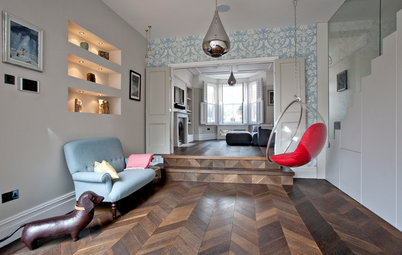

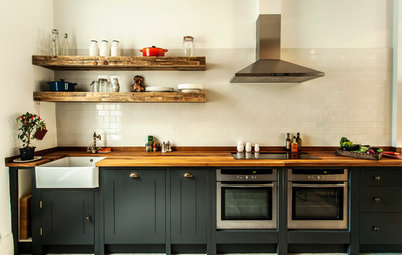
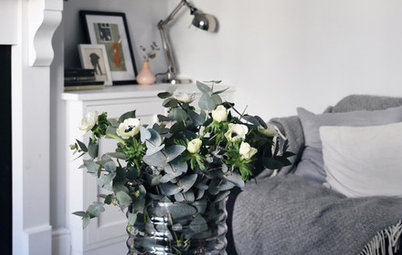
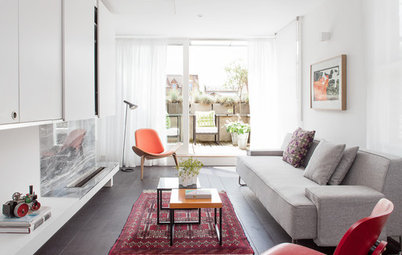

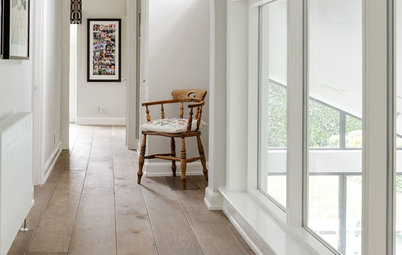
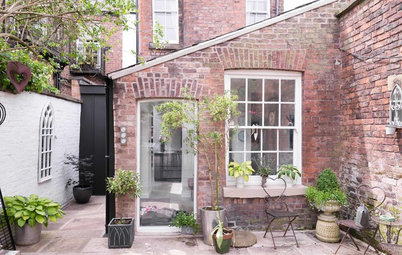
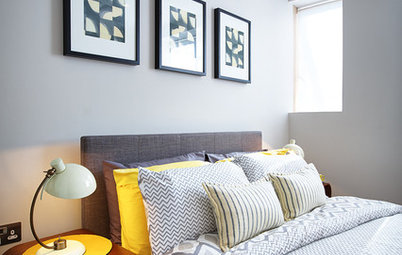
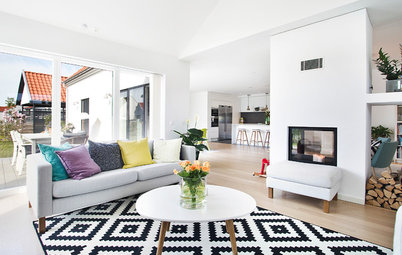
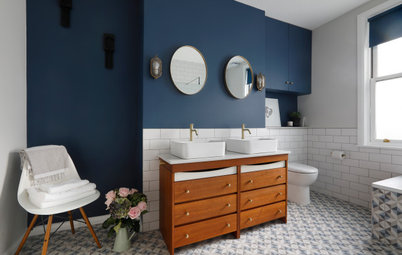
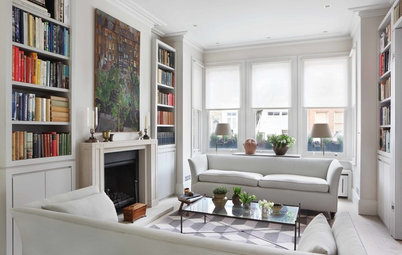
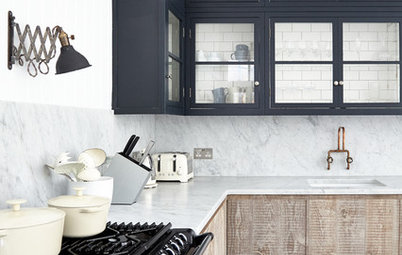

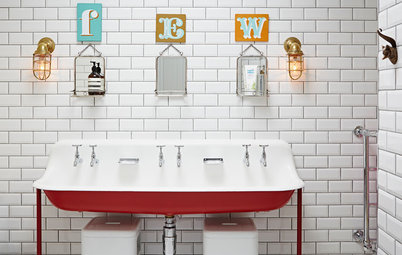

These are an excellent instant update if you’re working to a budget or a tight timescale. They will be ready to be hung straight from the shop, and you won’t need to wait for makers and fitters. You’ll have to take your own window measurements, but many retailers offer guidance on this.
There are drawbacks, however. ‘Because they’re available in limited size options, ready-made curtains may not be a perfect fit for your window,’ says Amanda Duffield of Unidrape Blinds & Interiors. ‘You may have to position a track or pole to suit the closest curtain size available.’ Duffield also warns that the linings used for ready-made curtains are generally of a lesser quality than those of made-to-measure.
Get expert advice on choosing between blinds, curtains or shutters